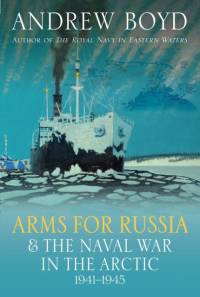Om Arms for Russia & The Naval War in the Arctic, 1941–1945
Arms for Russia and the Naval War in the Arctic, 1941-1945 fundamentally reassesses the operations by the Western Allies to deliver war supplies to Russia via the Arctic sea route between 1941 and 1945. It explores the motives underpinning Western aid, its real impact on the Soviet war effort, and its influence on wider Allied and German strategy as the war developed. It brings to life key participants, political and military, describes the interaction of intelligence with high policy and tactics, and brings a fresh perspective to key events, including the notorious convoy PQ 17. It also emphasizes that the Arctic conflict was not framed solely by the supply convoys, important though they were. British, German and Russian operations in a theater - defined by Adolph Hitler in early 1942 as the "zone of destiny" - were shaped by other perceived opportunities and threats. For instance, Germany concentrated its fleet in Norway to forestall a potential British attack while attempting land offensives to cut Russia's links with its northern ports. It also had vital raw materials to protect. Britain explored potential operations with Russia to dislodge Germany from the Arctic coast and sever her access to important resources. The book disputes the long-standing view that aid to Russia was essentially discretionary, lacking military rationale and undertaken primarily to meet political objectives, with only a minor impact on Soviet war potential. It shows that aid was always grounded in strategic necessity, with the Arctic supply route a constant preoccupation of British and American leaders, absorbing perhaps twenty percent of Royal Navy resources after 1941 and a significant share of Allied merchant shipping badly needed in other theaters. The Soviet claim, determinedly promoted through the Cold War, that aid was marginal, still influences attitudes in Vladimir Putin's Russia and contemporary Western opinion. It even resonates through the present war in Ukraine. Andrew Boyd demonstrates that in reality, Western aid through the Arctic was a critical multiplier of Soviet military power throughout the war and perhaps even enabled Russia's very survival in 1942; and he makes plain that the British contribution to the aid effort was greater than generally acknowledged. Elegantly written and incorporating many new perspectives on the Arctic theater, this new work should find a place on the shelves of every historian, scholar and enthusiast whose interests extend to the Russian dimension of the Second World War.
Visa mer

